Santa Fe, NM Pollen and Allergy Report for Summer 2023
Pollen Allergy Trends in Santa Fe, NM
When is pollen lowest in Santa Fe, NM?

February
Lowest month total PPM
Avg. PPM
When is pollen highest in Santa Fe, NM?

March
Highest month total PPM
Avg. PPM
How does pollen in Santa Fe, NM compare to New Mexico?
Santa Fe has a lower average PPM than the state of New Mexico.
Santa Fe yearly avg PPM:
New Mexico yearly avg PPM:
How does pollen in Santa Fe, NM compare to the USA?
Santa Fe has a lower average PPM than the USA.
Santa Fe yearly avg PPM:
USA yearly avg PPM:
Is pollen worse this year in Santa Fe, NM?
Spring 2023 was better than spring 2022.
Spring 2023 PPM:
Spring 2022 PPM:
Average PPM in Santa Fe, NM
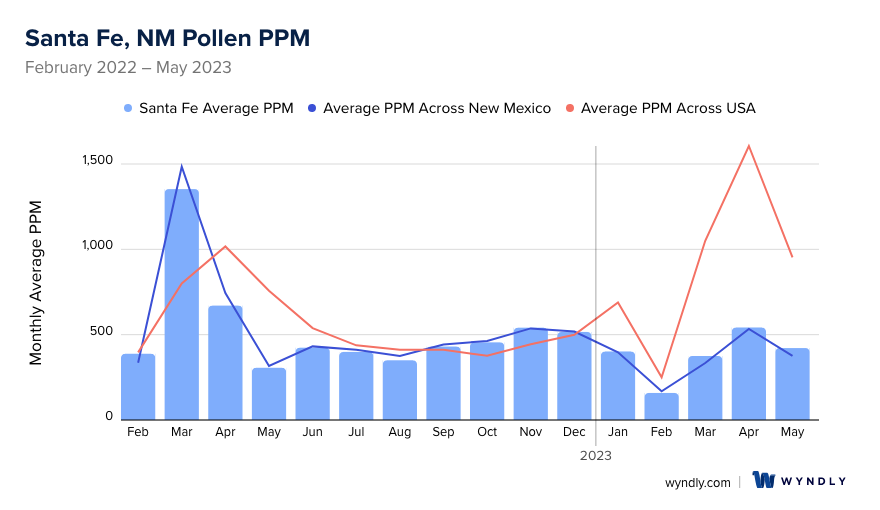
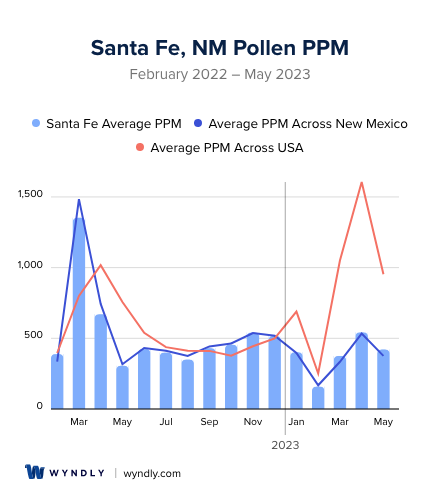
Santa Fe, NM Pollen and Allergy Breakdown by Month
Grass
When is grass pollen highest in Santa Fe, NM?
May has the highest grass pollen in Santa Fe, NM with an average PPM of
When is grass pollen lowest in Santa Fe, NM?
April has the lowest grass pollen in Santa Fe, NM with an average PPM of
Tree
When is tree pollen highest in Santa Fe, NM?
March has the highest tree pollen in Santa Fe, NM with an average PPM of
When is tree pollen lowest in Santa Fe, NM?
October has the lowest tree pollen in Santa Fe, NM with an average PPM of
Weed
When is weed pollen highest in Santa Fe, NM?
November has the highest weed pollen in Santa Fe, NM with an average PPM of
When is weed pollen lowest in Santa Fe, NM?
February has the lowest weed pollen in Santa Fe, NM with an average PPM of
Santa Fe, NM Pollen Monthly Breakdown by Pollen Type
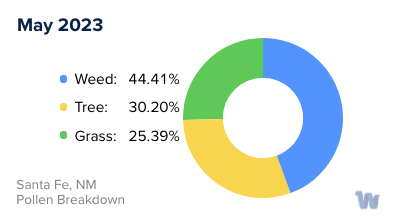
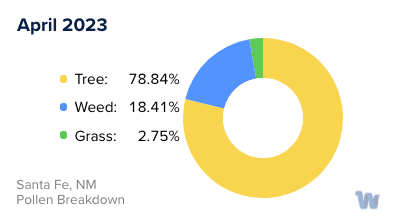
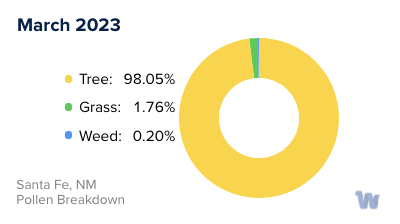
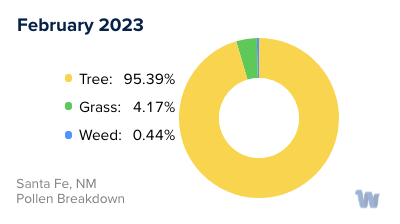
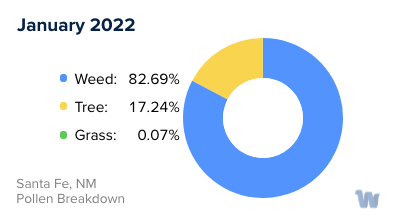
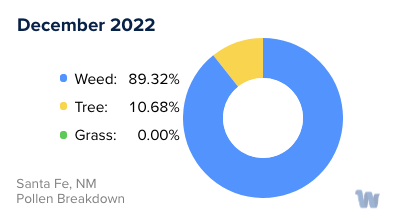
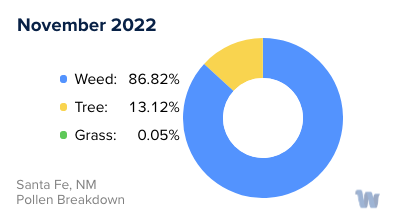
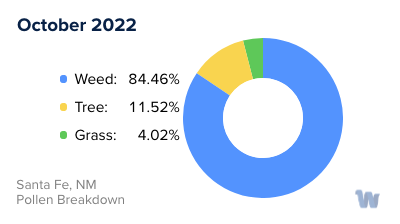
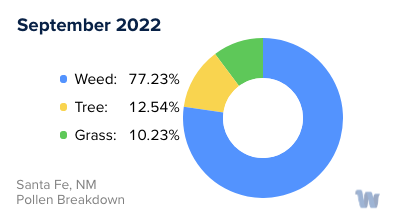
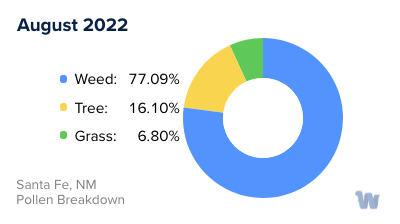
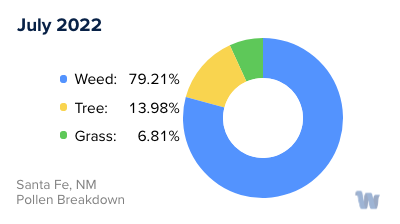
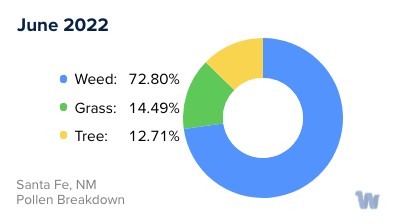
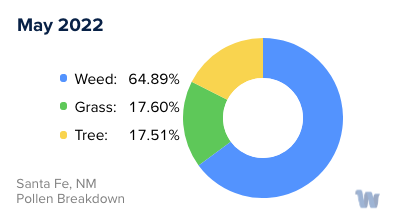
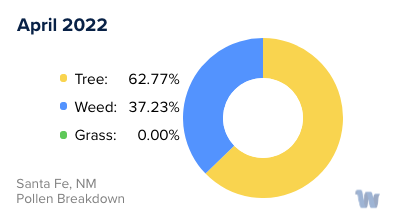
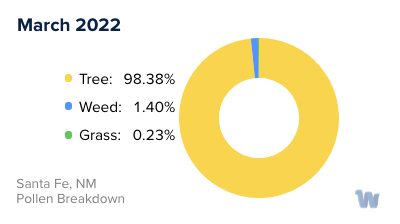
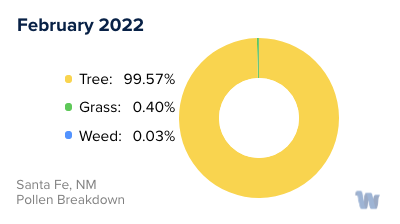
Pollen and Hay Fever in Santa Fe, NM
Living in the vibrant city of Santa Fe, New Mexico, is an enriching experience with its rich culture, stunning landscapes, and year-round sunshine. But for some residents, certain times of the year bring an unwelcome guest: pollen. Understanding pollen allergies and hay fever, especially in a high-desert environment like Santa Fe, can help you anticipate and navigate these seasonal discomforts.
Pollen is a fine powder produced by plants for fertilization, and it's a common trigger for allergies. In Santa Fe, several types of pollen are more prevalent and can cause an allergic reaction, which is often referred to as hay fever.
In the spring, from March to May, tree pollen is the main culprit. The Juniper and Cottonwood trees that dot the Santa Fe landscape release large amounts of pollen into the air. As the weather warms up, the trees begin their reproductive cycle, causing pollen counts to surge. If you're prone to allergies, you may find yourself sneezing, with a runny or blocked nose during this period.
Come summer, from June to August, grass pollen takes center stage. This includes pollen from local species like Blue Grama and Buffalo Grass. With the arrival of the monsoon season, these grasses flower and release pollen, potentially triggering allergic reactions.
Lastly, in late summer and early fall, weed pollen, particularly from the ubiquitous Sagebrush and Russian Thistle, comes to the forefront. The dry, windy conditions of Santa Fe can cause these pollen grains to travel great distances, affecting even those who live away from these plants.
In Santa Fe, the diverse flora contributes to a nearly year-round allergy season. While the exact timing and severity of pollen allergies can vary based on weather conditions and individual sensitivity, understanding the pollen types and their seasons can help you better prepare for these annual cycles. Remember, knowledge is your first line of defense. Stay informed and take proactive measures to ensure your time in Santa Fe remains enjoyable, despite the pollen seasons.

